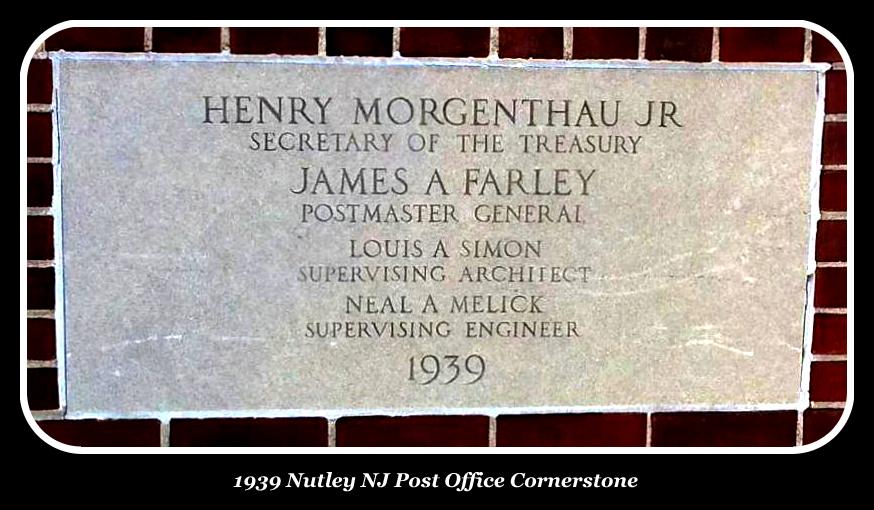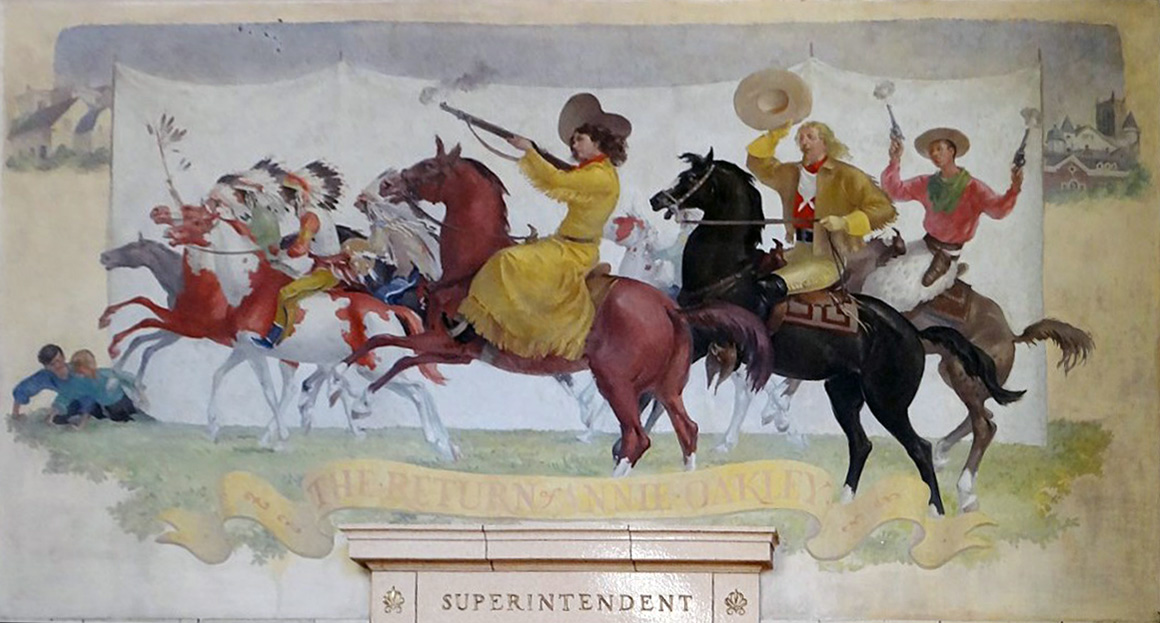NUTLEY POST OFFICE
ANN A. TROY
THE GREAT “postoffice theft,” which rocked the town to its foundations back at the turn of the century, when Nutley was only a village, occurred, the legend runs, because some of the town’s residents wanted the office in a more central location.
At that time the postoffice was in a store at Highfield Lane and Passaic Avenue. For sometime there had been agitation for the office’s removal, Republican leaders in the town heading the move. Residents living near the building, the home of Henry A. Connolly, insisted that the office remain there, and even went so far as to hold a mass meeting to arouse public opinion.
On the eve of the meeting, the story goes, the postoffice was “stolen,” lock, stock and barrel. The next morning it was found set up in orderly fashion in the town hall, occupying the room now headquarters for the health department. Not a letter or a stamp had been lost in the transfer.
The late Richard W. Booth, town Republican leader at the time, was accused of being the ring leader in the removal, but he kept silent. It was not until many years later that he and Dr. Abram H. VanRiper admitted their parts in the office’s removal. Leonard Rusby, postmaster at the time, is also supposed to have helped out in the transfer by setting up the equipment and getting the mail sorted in the new location.
The Nutley Historical Society’s research shows that before 1840 inhabitants of this area went to Belleville for their mail. The first move toward postoffice privileges here was a mail bag, which was brought once a day by horse and wagon from Newark to Belleville and Franklin Village. The North Belleville mail was dropped off at H. Van Winkle’s store on the northwest corner of what are now River Road and Park Avenue and the letters were distributed from there.
Distribution of the mail was very much like that in present day army cantonments, with the storekeeper standing on the porch and calling out the names of those to whom the different parcels of mail were addressed. The storekeeper not only shouted the names of those to whom the mail was addressed but told how many letters they were getting, where the different letters came from and who sent them, if that information was available.
Official postal service came into being in Franklin Village on July 17, 1849. The first postoffice was located on Bridge Street in the building later occupied as a residence by Col. L. H. Rowan and designated at a still later time as the Hawthorne Cottage. About 1884 the postoffice was moved to Poirrier’s store on Passaic Avenue, where it remained until about the time Leonard Rusby was appointed postmaster on May 2, 1882, when it was removed to his store on Franklin Avenue opposite William Street.
The name of the office was changed to Nutley on February 11, 1887, at which time Henry VanWinkle was postmaster. According to folklore, Henry A. Connolly, a Democrat in a Republican stronghold, set up the postoffice in a store at Highfield Lane and Passaic Avenue in 1897, and it was from there that it was “stolen.”
After the opening of the Paterson & Hudson Railroad in 1868 the number of postoffices was increased. A branch was opened at Avondale August 19, 1873, and for a long time mail was brought by train and distributed to the other offices from the Avondale station. The first regularly appointed postmaster at Avondale was Silas Condit, who succeeded H. VanWinkle. In March, 1876, Alexander Phillips was appointed postmaster at Avondale and the office was removed to a store on the opposite corner. In January, 1883, John H. White received the appointment and the office was moved to the Avondale railroad station, where Mr. White acted as postmaster, station agent and telegraph operator.
On November 30, 1907, the Nutley postoffice became a branch of the Newark postoffice. Free carrier service was instituted when four men were sent to Nutley from Newark to deliver the mail. Robinson J. M. Chase was superintendent at that time. There was considerable confusion in delivering the mail since houses in the town were without street numbers. Miss Elizabeth Eagleson, woman clerk, would go to the door of the postoffice, it is said, and point out where the houses were located. Richard W. Booth suggested a plan for numbering the houses and this was adopted.
The postoffice remained in the town hall until 1915, when a new site was procured at Franklin and Vreeland Avenues. The new building was constructed by the Nutley Realty company from the design of William A. Lambert and besides the postoffice the building contained offices and an assembly hall. Sub-stations were located at the stores of Michael J. Parvin, Centre Street and Franklin Avenue; Henry T. Lefferts, Passaic and Nutley Avenues, and Charles Schrouds, 260 Park Avenue.
For years there was an agitation for Nutley to have a separate postoffice, but the move was abandoned in 1939 on the advice of Representative Fred A. Hartley, Jr., who pointed out that separation from Newark would have many disadvantages.

The last move of the postoffice was to its present building, for which ground was broken on July 20, 1939. Completed seven months later, the building was opened with exercises attended by various postoffice officials. Michael O’Loughlin was superintendent in charge of the office at the time.

One of the distinctive features of the present office is a large mural depicting “The Return of Annie Oakley” famed woman sharp shooter, on the south wall of the interior. The painting was done by Paul Chapman, WPA artist, the Oakley episode being chosen over a football theme suggested by those who thought Nutley’s winning high school teams were the town’s chief disinction. Annie Oakley first came to Nutley in 1892 with the Eaton Stone circus, which maintained its winter quarters in Kingsland Road. In later years, as Mrs. Frank Butler, she spent much time here.
On the retirement of Mr. O’Loughlin as superintendent in 1942, after forty years of service, Warren N. Scoville became superintendent, coming here from Belleville where he had served as a special clerk.
Following Mr. Scoville have been Thomas A. Kelly and presently P. A. Tomasulo as superintendents.
